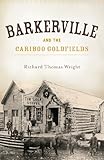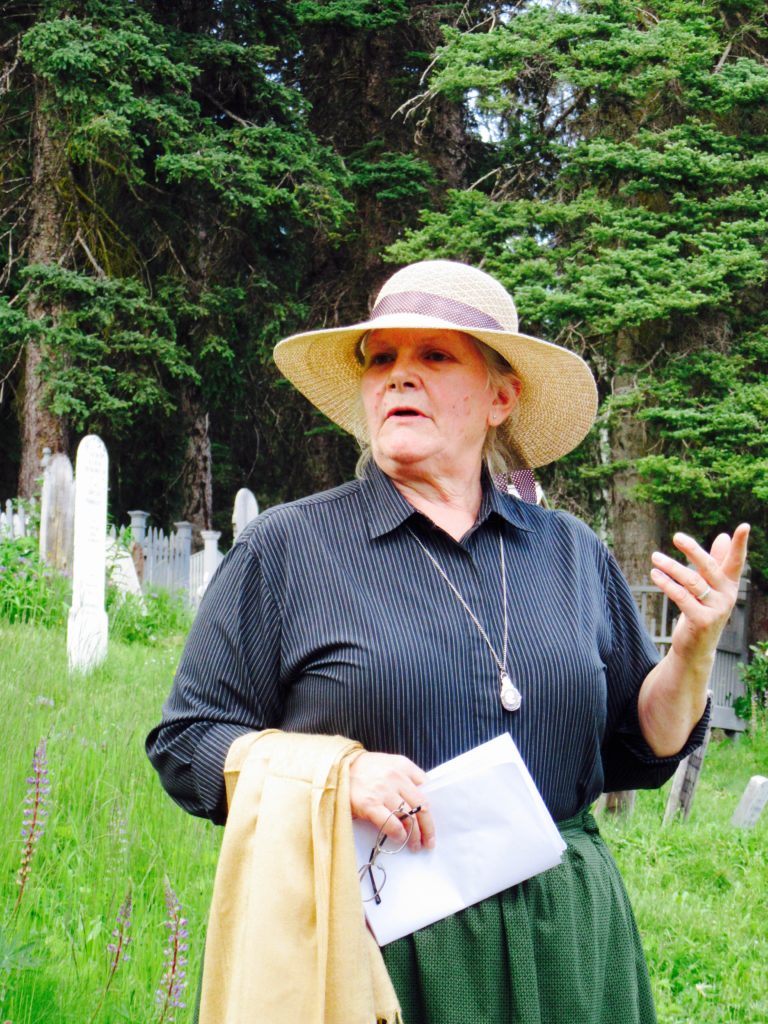Barkerville Cemetery in the heart of British Columbia, Canada remembers the lives of some of the people involved in the historic goldrush. At its peak in the 1860s, the gold mining town of Barkerville, B.C. was the biggest thing west of Chicago and north of San Francisco. This historic cemetery tour helps us revisit the past.
Disclosure: This post contains affiliate links. If you buy something from one of our affiliates, we receive a small commission at no extra charge to you. We appreciate your support!
Table of Contents
Walking back in Time in the Barkerville Cemetery
Although gold rush towns boomed all over the west in the 1800s, Barkerville is different. For instance, the town grew up around English miner Billy Barker’s strike in 1862. The site today has over 100 heritage structures still standing where they were built. The ghost town sees a mere fraction of the number of people that once clomped along the wooden sidewalks off Williams Creek in the foothills of the Cariboo Mountains. Past glories have become faded memories.
Stories of what life was like back in the goldrush era need to be carefully curated and fleshed out by historians. One surprising way to uncover life is to look at death. In the first place, cemeteries are devoted to remembering the past. Therefore, exploring cemeteries can be key to understanding lives. The historic Barkerville Cemetery is no exception.
We walked in amiable silence along with a small group on a guided tour, passing the site of the Royal Cariboo Hospital before arriving at the hillside resting place for miners and soldiers, surveyors and shopkeepers, doctors and lawyers.
Most came from Canada and the United States. Others travelled to Barkerville from as far away as Wales, England, Ireland, Scotland, Sweden and Germany. Many died far too young. Headstones show ages of 31, 21, 32, 24, 25 – reflecting lives cut short for those who toiled in the goldfields.
Cameronton Cemetery
Peter Gibson was the first soul to be laid to rest on July 24th, 1863 in what was then known as the Cameronton Cemetery. Peter, 31, died of typhoid fever. He worked for John ‘Cariboo’ Cameron before his early demise.
Cariboo Cameron was a miner who struck it rich with a claim on Williams Creek. A small township grew up around his strike. Not surprisingly, it was dubbed Cameronton. Cameron himself died on November 7th, 1888. At the age of 68, Cameron is one of the oldest people buried in the cemetery.
Sidenote: Although Cameron was a noteworthy citizen, it’s the tale of his first wife – who is not actually buried in the Barkerville cemetery – that is even more memorable. Seriously, who has two caskets, three funerals and four burials?
By 1866, the Barkerville Cemetery had 27 graves. Most of the burials were men – a reflection of the population demographics during the goldrush.
Sacred
to the memory of
John DUNN,
native of Wick,
Glamorganshire, South Wales,
who died at 1 o’clock a.m.
Oct. 6, 1863.
Aged 24 years
There were no Chinese or Native burials in this graveyard – another sign of the times. A nearby Chinese graveyard housing the remains of Chinese pioneers in Barkerville – most from the southern province of Guangdong – is being restored.
A Woman of the Goldrush Era
One notable woman buried in the Barkerville Cemetery is Janet Allan. The marker on her grave reads:
Sacred
to the memory of
Janet Allan
The Beloved Wife of
William Allan
Native of Fireshire
Scotland
Who departed this life
September 1870
Aged 42 years
Sometimes I wish we could rewrite these tributes. She was more than just a wife. There’s an interpretive sign just outside of the town of Barkerville that explains more of Janet’s unorthodox life.
“…dressed like a man, drank like a man, and died like a man…”
Now that’s a story worth remembering!
Scotch Jenny’s Story
Janet was better known as ‘Scotch Jenny’ – a well-respected woman who showed kindness for the sick. Apparently, this storekeeper’s wife also dressed like a man, drank like a man, and died like a man (when the carriage she was driving plunged over a bank into William’s Creek on September 7th, 1870).
Today, our journey to see Scotch Jenny’s final resting place was less of a hike and more of a stroll up the 750 metre (1/2 mile) long, accessible trail from St Saviour’s Anglican Church – along a portion of the old Cariboo Wagon Road. The 650-kilometre-long wagon road was constructed by the colony of British Columbia between 1862 and 1865. Like Barkerville, this road is a historic site itself.
Go ahead, take a walk and discover life through death with Barkerville’s fascinating grave history.
When You Go
Barkerville is located approximately 750 km northeast of Vancouver – or about an hour’s drive from Quesnel, B.C.
Guided tours to the Baskerville Cemetery run on a regular basis, departing from the church during summer months.
There are currently two active campgrounds (Government Hill is temporarily closed) within walking distance of Barkerville. Lowhee Campground and Forest Rose Campground are open late June to mid-September. For more information call 1-888-994-3332. Lowhee is 2 km east of Barkerville and has 87 sites including 5 with power. Forest Rose is 3 km from Barkerville onf the Bowron Lakes Road. It has 54 campsites.





Is it possible to buy a copy of ‘Barkervilles Grave History’ ? I’m in Wales, UK, and believe one of my ancestors, John Pomeroy, was buried in Barkerville.
Hello Lynette,
You could try looking at the Barkerville archives (http://www.barkerville.ca/history/#archives) to see if they have anything about this. Also, looking at https://www.findagrave.com/, I did find a John Pomeroy, Native of Colyten, England. Born 1833. Died 1913. Aged 81. Best of luck, Megan
I WAS BORN in Barkerville in 1939 and so was my brother he was born there in 1937
How long did you live in Barkerville, Carole? Have you been back recently? It is a special place!